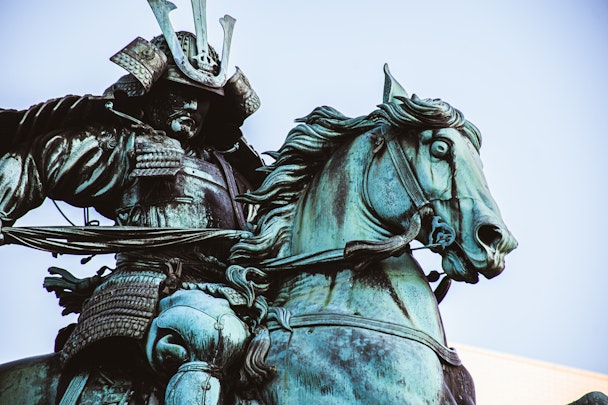Smart bidding and ‘Hagakure’: connecting marketing automation with human innovation
Machine learning is revolutionizing how marketers can bid for digital ad campaigns, says Tug’s Sean Greally. Here he looks into one way to approach that change, guided by the Japanese concept of ‘Hagakure.’

What do machine learning and pay-per-click advertising have to do with the Japanese concept of ‘Hagakure’? / Ryunosuke Kikuno via Unsplash
Machine learning technology (ML) looks set to revolutionize paid ad campaigns, leading to a seismic paradigm shift that replaces manual bidding in favor of smart bidding.
Manual bidding involves pay-per-click (PPC) experts setting their maximum cost-per-click (CPC) to optimize campaigns. Smart bidding allows ML tech to determine the ideal bid amount for individual searches in real-time, based on data, helping to increase conversions while saving time and money. Emerging in 2016, smart bidding seems to be a significant focus for Google as it continually develops its ad systems and moves beyond traditional keyword targeting. Learning how to structure ad accounts effectively is crucial for success with smart bidding.
Advertisement
Hagakure
To make efficient use of ML, we can look to a new ML account structure known as ‘Hagakure.’ Originating from samurai literature, the phrase roughly translates to ‘hidden behind the leaves’; it’s a practical and spiritual guide for samurai warriors.
In paid search marketing, the strategy involves simplifying a Google Ads account structure to maximize the potential of ML. The aim is fewer campaigns and ad groups, with less segmentation. Instead, marketers should create sizable ad groups that bunch together a large amount of data. This helps Google’s algorithms identify and maximize the potential of ads more quickly and effectively. Combining this structure with smart bidding, the Hagakure strategy shifts focus away from the granular account management of manual bidding, prioritizing data instead.
When applying ML and a Hagakure account structure, marketers must first identify their KPIs for an ML-optimized account and be able to measure them accurately. It’s all about considering the areas for improvement, and where automation can have a significant impact. Marketers should set KPIs such as the number of impressions per ad group per week, and the number of conversions per campaign per week. It’s also important to remove segmentation and avoid low-traffic landing pages, while using one landing page per ad group.
Advertisement
Human-technology collaboration is essential
Data dictates how well this ML system performs. PPC experts must collect, manage and curate the right data for the campaign and brand in question. Not doing so can result in inaccurate learning, and the machine will fail to achieve its purpose. Human-technology collaboration is essential to the success of content marketing automation. It’s not just a case of setting up the system and leaving it to run, though.
Tug Agency’s paid media account director Ian Kahn presented the Hagakure method and results of the BCG 2019 Digital Marketing Maturity Study to attendees of the DMEXCO 2022 conference in detail. The results showcase the high-value return that can be achieved with ML and human collaboration, and demonstrate the performance differences between tech without human input and tech with human input. The study shows a 15% increase in measurable performance where marketers incorporated the collaborative ‘human-technology’ approach.
As my colleague Ian Kahn says: “As ML in advertising continues to advance, advertisers must be willing to re-evaluate best practices. They should shift focus towards ensuring the right data is fed back into advertising campaigns, rather than focusing on granular keyword optimizations, ad group segmentations and manual bid adjustment. This creates a feedback loop that accelerates efficient growth and exceeds the optimization possibilities of manual strategies.”
Kahn goes on: “Additionally, advertisers must develop new ways of working and acquire new skill sets. With this, an advertiser can help clients and stakeholders develop their own understanding of the data’s importance and how to best establish a privacy-safe end-to-end tracking solution. Being able to track each stage of the customer journey from the first to the last touchpoint and feeding that data back to Google is becoming the most important driver of performance. As third-party cookies slowly become a thing of the past, ensuring that first-party data is collected accurately and used securely will become paramount to future online marketing success.”
Content by The Drum Network member:

Tug Agency
Tug is a performance driven, global digital marketing agency, optimised to grow ambitious brands, through the smart combination of data, media, content and technology.
Our...

